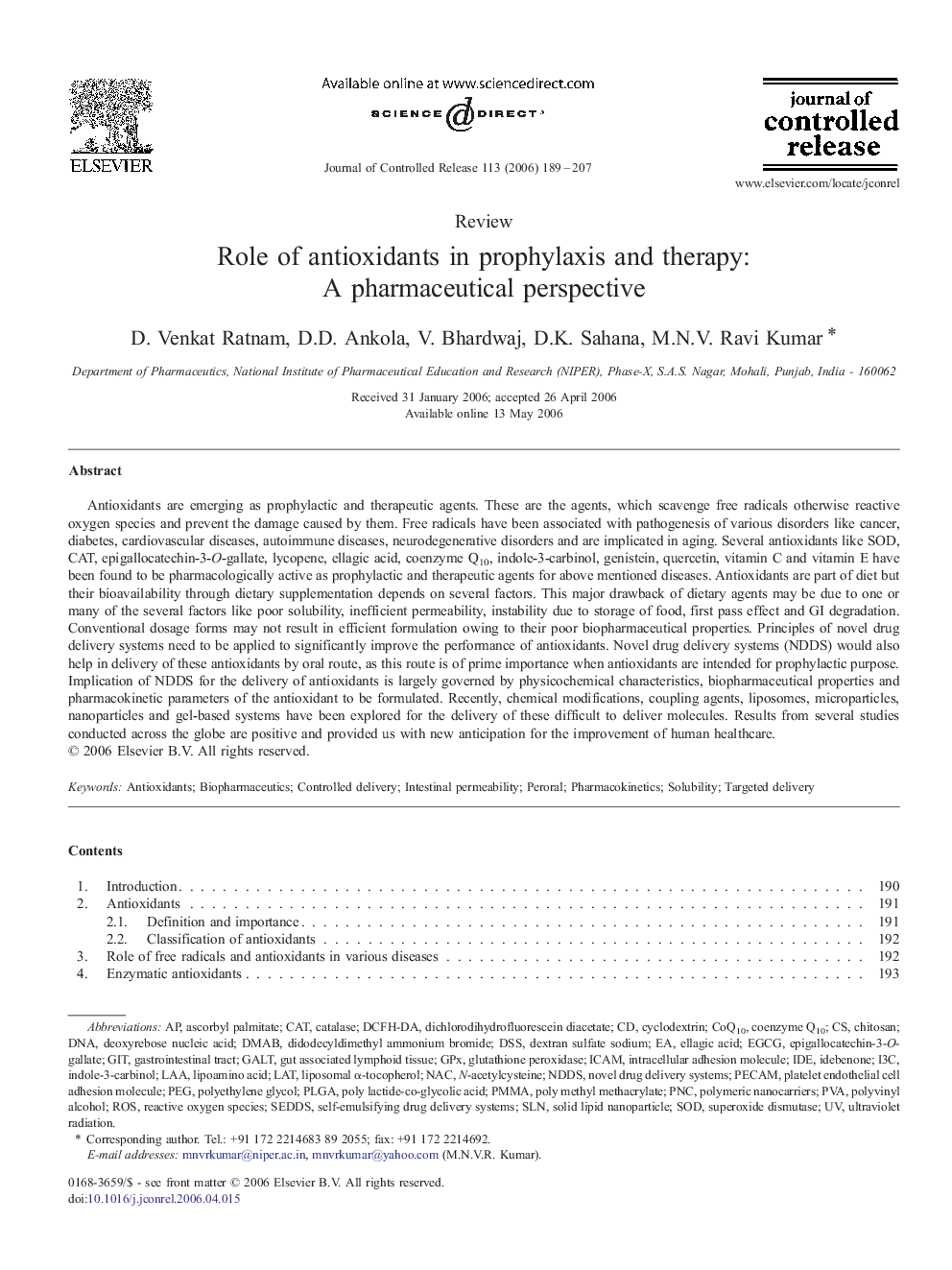| Article ID | Journal | Published Year | Pages | File Type |
|---|---|---|---|---|
| 1427528 | Journal of Controlled Release | 2006 | 19 Pages |
Antioxidants are emerging as prophylactic and therapeutic agents. These are the agents, which scavenge free radicals otherwise reactive oxygen species and prevent the damage caused by them. Free radicals have been associated with pathogenesis of various disorders like cancer, diabetes, cardiovascular diseases, autoimmune diseases, neurodegenerative disorders and are implicated in aging. Several antioxidants like SOD, CAT, epigallocatechin-3-O-gallate, lycopene, ellagic acid, coenzyme Q10, indole-3-carbinol, genistein, quercetin, vitamin C and vitamin E have been found to be pharmacologically active as prophylactic and therapeutic agents for above mentioned diseases. Antioxidants are part of diet but their bioavailability through dietary supplementation depends on several factors. This major drawback of dietary agents may be due to one or many of the several factors like poor solubility, inefficient permeability, instability due to storage of food, first pass effect and GI degradation. Conventional dosage forms may not result in efficient formulation owing to their poor biopharmaceutical properties. Principles of novel drug delivery systems need to be applied to significantly improve the performance of antioxidants. Novel drug delivery systems (NDDS) would also help in delivery of these antioxidants by oral route, as this route is of prime importance when antioxidants are intended for prophylactic purpose. Implication of NDDS for the delivery of antioxidants is largely governed by physicochemical characteristics, biopharmaceutical properties and pharmacokinetic parameters of the antioxidant to be formulated. Recently, chemical modifications, coupling agents, liposomes, microparticles, nanoparticles and gel-based systems have been explored for the delivery of these difficult to deliver molecules. Results from several studies conducted across the globe are positive and provided us with new anticipation for the improvement of human healthcare.
